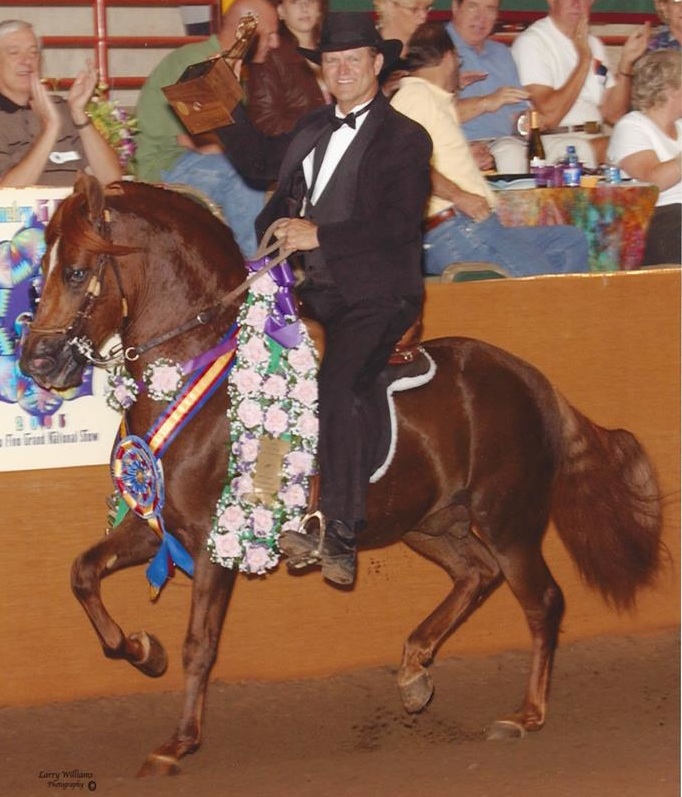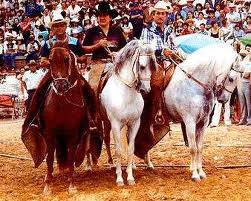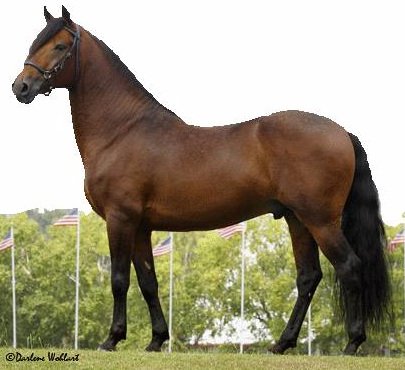The Colombian Paso Fino History
By Annette Haines
On the second voyage of Columbus an armada of seventeen ships sailed from Granada in the “Real Colonization Expedition” for the New World. On May 23rd, 1493, Queen Isabella and King Ferdinand sent their secretary, the following order:
“We have agreed that among the people we commanded to go in such armada, 20 lancers on horseback must be included…..you choose those twenty lancers who must be reliable and trustworthy men, who voluntarily want to go and that five of them be replacements and that it be Mares.”
Christopher Columbus later complained that when they were embarking the correct number of horses were indeed loaded onto the ship but that the horses sent were not “the best” ones, the “best ones” having been sold in a kind of nefarious swap benefiting the handlers. So according to this story, the very first horses that came from the Continent were not the highest quality Spanish horses. But in the next twelve years, horses continued to be shipped to North America, especially mares, and mule and horse breeding facilities were established in what was called La Espanola, known today as Santo Domingo. In 1524, the first horses arrived in Neu Granada, or what today is called Colombia, South America.
It has been suggested that the gait of the Paso Fino is a result of crossing an ambling-gaited horse, with a lateral gait and a trotting horse, which is diagonal. However it happened, the Paso Finos ‘special way of going’ is a mixture of both and the result is a horse with an extraordinarily smooth ride. There were Paso Fino horses in Spain before 1493 and the small horses that moved without rocking or shaking were the ones preferred by the Spanish queens. Some of them were taken to America during the Conquest period and, unlike what happened in other countries, the Paso Fino was prized and remained unmixed with other breeds in a few regions of Central and South America and the Caribbean. Since the Colombian Paso Finos all move in the same way, it can be concluded that those horses brought by the Spanish conquistadors derived from a single breed even though trotting and galloping horses were also introduced and were the origin of the Colombian Trocha y Galope breed.
 The Natural Gait
The Natural Gait
The gait of the Paso Fino has long been valued and is the result of both genetics and breeder selection. It cannot be known if the gait of those first horses was similar to the gait of our horses today but selection was surely influenced by the topography of swampy plains and tablelands, mountains, deserts and beaches. Throughout the Americas, the horse took different forms, in each country and region, based on selective breeding, feeding habits and the environment in which they evolved. In Colombia, the Paso Fino horse became a source of great National pride, especially during the revolution and liberation from Spain.
Characteristics of the Colombian Paso Fino

- Principe Heredero de ZR has Nevado, Amadeus, Resorte Cuarto, Piloto and Retorno in his bloodlines. Two time PFHA Grand National Performance Champion.
The ideal height of the Colombian Paso Fino is 13.39 hands to 14.57 hands. If it is shorter than 13.39 hands it is disqualified to compete and if it is taller than 14.57 hands, it loses points but is not disqualified. They have a small head and easily move their ears and flare their nostrils. The eyes are warm and bright, with a firm and penetrating gaze that suggests their intelligence. The forelock, mane and tail is long and full and little is done by way of pulling or shearing to lessen the effect of flowing mobility, long and shiny. The tail must be steady and when the horse is moving forward under saddle, any switching of the tail is seen as reprehensible as it is a sign of anger or laziness or even discomfort.
The Colombian Paso Fino is prized for its brio. This is understood as vigor, spirit and fire. Brio is what gives the horse its extreme responsiveness, responsiveness to the rein, to a sound or click the rider makes, and to the use of leg and heel aids. The brio makes the horse willing and nimble, able to move with only the slightest suggestion of the rider. Brio should be pleasing and spontaneous in the horse.
In the classic Colombian style, the most sought after colors for breeding purposes have been dark bay and brown, grey, and chestnut. The Colombian breeders have never favored horses with white markings or spots. However, color takes a back seat to the way a horse moves. The preferred way of moving is a set of short, rapid, rhythmical footfalls with a harmony and softness between the front and back end of the horse. This creates the smooth ride the Paso Fino is known for. A horse is also valued for giving a sensation of power and agility to its rider.

The Colombian Paso Fino in the 20th and 21st Centuries

- Three amazing examples of Colombian Paso Finos, from left to right:
Resorte IV, Bochica and Contrapunto.
During the first part of the twentieth century, the Paso Fino breed was almost lost. In an attempt to “improve” the breed, mares were bred to trotting horses and English race horses. Cattlemen and ranchers wanted taller horses and thought the trot was more elegant and practical. They crossed the Paso Fino with Arabs and Andalusian stallions brought to Colombia with great hoopla and demanding large stud fees. Although they gained height and speed, they lost much of their “ease, sobriety, and resistance.”
This experiment brought a harsh lesson: the breed could be maintained only by selection and use of the very best stallions. A breed registry was created in Bogotá of Native Paso Fino Horse Breeders in 1947.
Some of the best exemplars in that registry are Monarca, Resorte III, Contrapunto, Bochica, Plebeyo, Pistolero, Capuchino, Castellano, Dalia, Retorno, and Nevado, to name only a few. These famous names remain as the foundation of the breed on the PFHA registrations of Paso Finos alive today. The progeny of these fine horses are creating the Paso Finos of the future.


Hi!! Maybe I can assist you with some History since I imported a few of the foundation horses that you mention in your article Example …RESORT III , PLEBEYO And contributed to the breeding of Capuchino …Castellano
…Retorno…Nevado . Also change the name Paso Colombiano to Paso Fino Colombiano . THE FIRST to import colombian horses to the Dominican Republic and Puerto Rico. AND everything thats worth anything in the modern era comes from that trip 44 years ago coming this December . Att yours saludos. RAFFI
Thanks so much for your response to the Colombian Paso Fino History article, Rafael Rivera. We would love to have an article written about importing Paso Finos 44 years ago. That would be interesting to read for sure, especially from someone who was there in person.
Please feel free to contact us at https://www.spanishhorsetack.com/contact/ if you would like to write a historical article.
Sincerely,
Erin Morgan
Raffi saw this article and would love to talk to you. I know it was posted a while ago but am hoping we can make contact some how.
Raffi
Thank you. God bless you.
Feel free to call me 305 360-6541 Erin, Saludos Raffi
Feel free to call me Erin 305 360-6541 Saludos Raffi ………..Also an article on ” Apsolute Equestrian Magazine” first edition
Very informative article. Love all the articles. Thank you for making them available to us!
Diane G.
Loved the article. Last year I bought a Paso Fino named Bandette de Resorte and her great grandfather is listed as Resorte III and the dam as Cigalia. I was researching Bandy’s past and came upon this article. Do you know how I can find out about her past? Thanks.
Thank you for these wonderful articles. Pasos have such a rich history. Question: According to this article, some Pasos were bred to trotting horses in the early 1900s. Did these crosses contribute to the foundation horses?
I have a Mustang that is part Columbian Paso Fino. Midnight ha’s the gait. I just want him.to be in sync with next year’s Mustang Magic
This was a wonderfully written article that is very helpful to explain our horses history. Please came visit this wondweful breed of horse at the ranch in Anniston, Al. Anytime.
I was reading on an chart that put Paso Fino as a different breed from Colombian Paso Fino, is there a difference? Or is it just the breed originated/formed in different locations and were just given the different names due to that?
I just bought a rescue horse and had him DNA tested the results were shocking since I thought I was buying a welsh mix. He came back Colombian Paso Fino Mangalarga Marchardor. I’m not familiar with either breed very well. He is a beautiful Dark Grey looks as though he may grey out a bit. So far it seems like a very sweet breed.
Thanks so much for saving him, Danielle! I have a Colombian Paso Fino stallion, and I just love him–so intelligent and beautiful! The Mangalarga Marchadrdor is a pretty rare breed in the US. One of the breeders submitted an article for our website here:
https://www.spanishhorsetack.com/spanish-horse-breeds/mangalarga-marchador-horse/
They are both beautiful horses! Would love a photo of yours
Also, if you are on Facebook we sponsor some horse pages and groups that you may be interested in:
https://www.facebook.com/groups/horserescuestories/
https://www.facebook.com/groups/bolerogaitedhorseadoptionnetwork/
https://www.facebook.com/HorseNews/
We also have a Facebook page for Spanish Horse Tack here:
https://www.facebook.com/customhorsetackandgifts/
You can also see photos of my Colombian Paso Fino on my own FB page here:
https://www.facebook.com/tracy.stevens.779642
Feel free to Friend me.